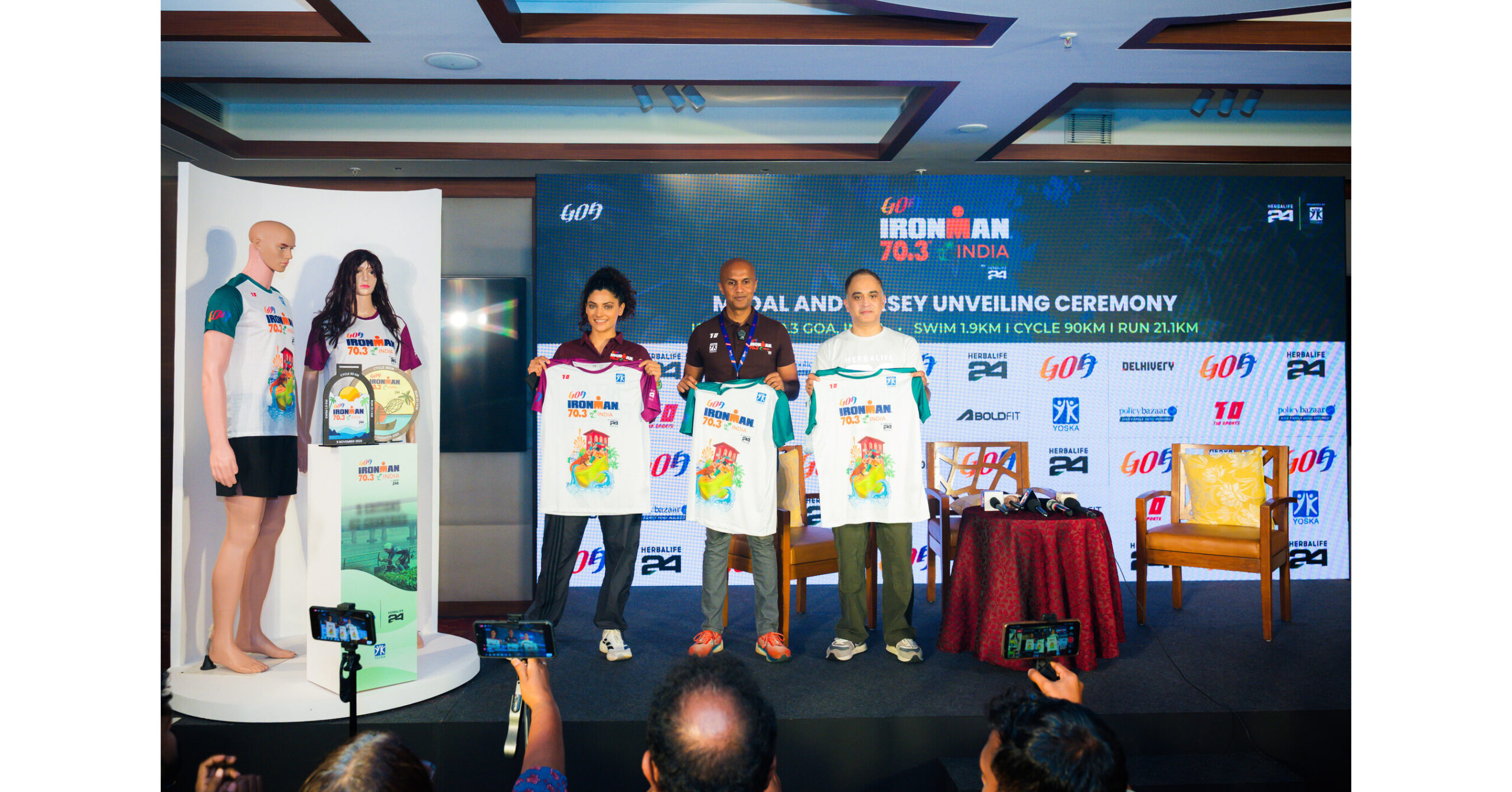BENGALURU, India, Nov. 11, 2025 /PRNewswire/ — Herbalife, a premier health and wellness company, community, and platform, reaffirmed its position as the Official Nutrition Partner for the fifth edition of IRONMAN 70.3…
Author: admin
-

Comparative Analysis of Echocardiographic Parameters in Hyperuricemic
Introduction
In the context of globalized health research, elevated uric acid levels have emerged as a significant public health concern. Epidemiological data clearly indicate a substantial rise in the prevalence of hyperuricemia in recent…
Continue Reading
-

Partition of Gaza a looming risk as Trump’s plan falters
MANAMA: A de facto partition of Gaza between an area controlled by Israel and another ruled by Hamas is increasingly likely, multiple sources said, with efforts to advance US President Donald Trump’s plan to end the war beyond a ceasefire…
Continue Reading
-

Xbox Cloud Gaming Appears to Launch in India After Years of Anticipation
theguardian.com to send you this newsletter. You can complete full registration at any time. For more information about how we use your data see our Privacy Policy. We use Google reCaptcha to protect our website and the Google Privacy Policy and Terms of Service apply.after newsletter promotion
More details soon …
Continue Reading
-

Durable peace hinges on Afghan terror group control: PM Sharif
Prime Minister Shehbaz Sharif emphasized on Tuesday that sustainable peace in the region hinges on controlling terrorist groups operating from Afghan soil.
Speaking at the International Speakers Conference in…
Continue Reading
-

Durable peace hinges on Afghan terror group control: PM Sharif
Prime Minister Shehbaz Sharif emphasized on Tuesday that sustainable peace in the region hinges on controlling terrorist groups operating from Afghan soil.
Speaking at the International Speakers Conference in…
Continue Reading
-

All games in Nintendo Black Friday and Cyber Monday Sale | Esports News
Nintendo has officially announced its official Black Friday and Cyber Monday 2025 sales, and they are offering solid discounts across various titles. This provides fans with the perfect opportunity to get their favorite games for a…
Continue Reading
-

WBCSD and One Planet Network announce launch of the Global Circularity Protocol for business (GCP) at COP30
- GCP launches at COP30 as the world’s first global voluntary framework for measuring, managing, and communicating circularity impacts.
- Developed by WBCSD and One Planet Network (hosted by UNEP) with 150+ experts and 80+ organizations.
- Empowers companies to cut waste, reduce emissions, boost accountability and improve business performance.
- Impact analysis: up to 120 billion tonnes of material savings and 76 gigatons CO₂ can be avoided by 2050.
- Piloted by industry leaders, the GCP sets a new benchmark for credible, comparable circularity reporting.
Belém, 11 November 2025: The World Business Council for Sustainable Development (WBCSD) and One Planet Network (hosted by UNEP) have announced the official launch of the Global Circularity Protocol for business (GCP) at COP30, marking a major milestone in the global transition to a circular economy.
Developed in partnership with over 150 experts from more than 80 organizations – including leading businesses, policymakers, and scientific advisors – the GCP is the world’s first voluntary science-based, globally harmonized framework designed to help companies of all sizes measure, manage, and communicate their circular performance and impacts across value chains.
A new era for corporate performance and accountability
The GCP empowers businesses to move beyond linear, wasteful models by providing practical, standardized steps and metrics for reducing waste, cutting emissions, and creating value for people and planet while delivering business value for all. By aligning with leading global standards, the Protocol enables credible, comparable reporting and supports companies in meeting rising regulatory and stakeholder expectations.
The Global Circularity Protocol for Business sets a new benchmark for corporate performance and accountability. Circularity is no longer optional – it is a strategic necessity for the resilience of business and the health of our planet. The GCP provides companies with standardized, science-based metrics and a clear roadmap for measurable action, enabling leaders to drive tangible progress, build resilience, and deliver long-term value to both business and planet. The scale of the opportunity is significant. Our analysis has revealed that by 2050, widespread adoption of the GCP could save up to 120 billion tonnes of materials – equivalent to one year’s current global consumption – and avoid up to 76 gigatons of CO₂ emissions – equivalent to one and a half times current global annual emissions. I encourage business leaders and policymakers alike to adopt the GCP as a practical foundation for accelerating the shift to a just, circular, and regenerative economy.
– Peter Bakker, President and CEO, WBCSD
Real-world impact and global collaboration
Piloted by industry leaders and a cohort of GCP Front Runners, the GCP is already delivering results – helping companies identify circularity hotspots and opportunities to drive innovation, and build resilient, future-fit value chains. The Protocol’s collaborative development process ensures it is robust, practical, and adaptable for diverse sectors and geographies.
The GCP is a powerful catalyst for value chain transformation. It enables companies to map material flows, identify circularity hotspots, and collaborate with partners at every stage – unlocking efficiencies, reducing risk, and scaling impact beyond individual operations. Launching the GCP at COP30 is no coincidence. We’re here on the international stage because the GCP is a truly global solution – it responds to some of the most pressing global risks, including resource scarcity, supply chain volatility, and climate change.
– Diane Holdorf, Executive Vice President, WBCSD
A game changer for credible circularity
The sustainability professionals, policy makers, and academics that contributed to develop the GCP are calling it “a game-changer for credible circularity,” “the missing link between ambition and action,” and “a roadmap for business value and accountability.” Their feedback continues to shape the Protocol as it evolves to meet the needs of a rapidly changing world.
The GCP delivers what the circular economy has long lacked: a globally harmonized framework to help companies measure, manage, and disclose circularity impacts. This collaborative effort reflects the multilateral ambitions of the Stockholm+50 Action Agenda and of the Global Strategy for Sustainable Consumption and Production launched by the United Nations in 2022.
– Jorge Laguna-Celis, Head, One Planet Network (hosted by UNEP)
At Philips, circularity is a powerful lever to reduce material use and our overall impact on climate and nature, while driving customer value and business success. Healthcare is a material-intensive industry. Embedding circular practices and innovations can help hospitals with reducing their environmental footprint while improving healthcare resilience and patient outcomes. That’s why we collaborated and co-championed the Global Circularity Protocol. GCP1.0 offers a clear and unified approach to set ambitious and adequate goals for circularity – a much-needed step towards a sustainable and healthy future.
– Harald Tepper, Global Lead Circularity, Philips
The GCP is important to TOMRA because it provides a common framework for businesses to measure progress on circularity initiatives. This is vital for ensuring that change can occur at scale, supporting circularity targets and policymaking going forward.
– Tove Andersen, President and CEO, Tomra
The Global Circularity Protocol (GCP) is a strategic enabler for resource-intensive sectors like mining to contribute meaningfully to global sustainability and energy transition goals. At Vale, advancing circularity means transforming extraction and processing systems to maximize material recovery, reduce environmental impact, and accelerate the shift toward low-carbon, circular production models that will deliver the ‘mining of the future’ we are aiming at.
– Bruno Pelli, Global Director in Mining Technical Services, Vale
Time to turn circular ambition into measurable business impact
The launch of the GCP at COP30 is a call to action for business leaders, sustainability professionals and policy makers to adopt the GCP and join the growing community of leading businesses that are accelerating the transition to a circular economy.
We invite all stakeholders – from pioneering organizations and policymakers, to researchers and financial experts – to contribute ideas, pilot methodologies and share lessons learned, as this first version of the GCP is just the starting point of a dynamic, multi-year journey working for a resilient, regenerative economy that benefits people and planet.
Discover the GCP and help your organization turn circular ambition into measurable business impact.
The launch was co-hosted by the Ministry of the Environment Government of Japan (MOEJ), the World Business Council for Sustainable Development (WBCSD), and UNEP One Planet network at the COP30 Japan Pavilion.
Notes
The potential impact of the GCP
Source: World Business Council for Sustainable Development, & One Planet Network. (2024). Global Circularity Protocol for Business: Impact Analysis on Climate, Nature, Equity and Business Performance. Link
- The GCP could enable 100-120 billion tonnes of cumulative material savings by 2050 – equivalent to one year’s current global material consumption.
- Adoption of the GCP could deliver 67-76 gigatons of CO₂ equivalent avoided by 2050, or about 1.3–1.5 times current annual global emissions.
- The GCP can double the pace at which businesses reach advanced circularity maturity levels, accelerating the benefits of circular business models by more than a decade.
- The protocol is expected to drive 11-12% annual reductions in PM2.5 air pollution between 2026 and 2050, contributing to significant public health gains.
- By 2050, the GCP could reduce arable land occupation by up to 2.9% (0.7-1.1 million km²) – comparable to the size of Ethiopia.
- Circularity, enabled by the GCP, could unlock $4.5 trillion in economic growth and create 6 million new jobs through activities such as recycling, repair, renting, and remanufacturing.
- These figures underscore the GCP’s potential to deliver measurable, system-wide benefits for business, society, and the environment – making it a critical tool for the global transition to a circular economy.
Continue Reading
